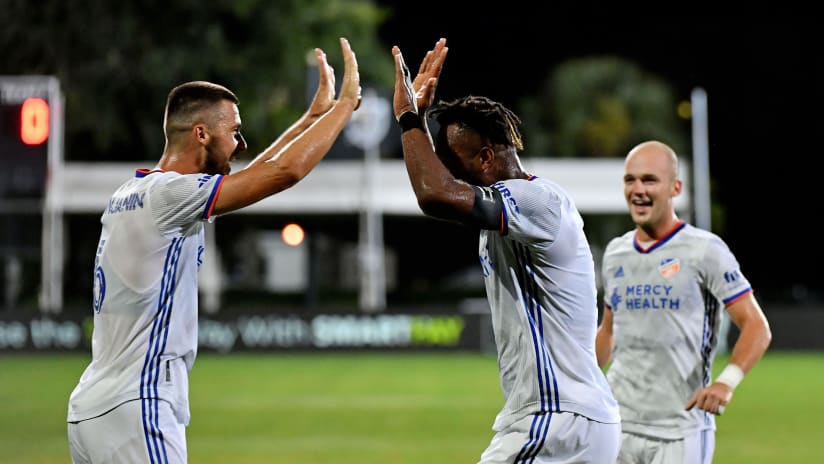FC Cincinnati began the MLS is Back Tournament by playing in their preferred style: the Dutch Way. Using a base 4-3-3 system, they pressed high, prioritized fluid passing and wanted a freestyling attack in the final third.
If the tactics worked, goals conceded could be compensated by outscoring the opponent. This is what head coach Jaap Stam wants, and it’s the style general manager Gerard Nijkamp is building a roster to implement.
But this preferred identity isn’t the realistic one – at least not currently.
Playing this way lasted 25 minutes against Columbus Crew SC until Cincinnati conceded twice in four minutes and eventually lost, 4-0. Consider that the ground zero of FCC’s new approach.
So, how’d they respond when their version of Total Football didn’t work? By using the exact opposite tactics: low defensive blocks, compact defending and protecting a lead rather than growing it. Basically, Catenaccio – a defensive style widely associated with Italian soccer.
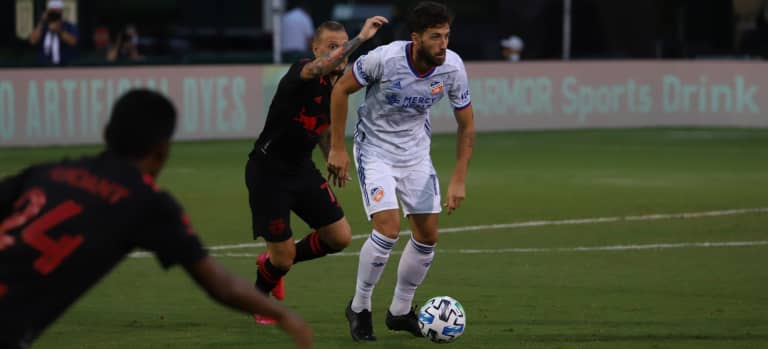
The team’s ability to try and implement contrasting tactics is a testament to Stam and his coaching staff, and seems natural given his experience in the Eredivisie and Serie A. The fact that it’s working effectively is an impressive achievement from the players.
Cincinnati conceded nine goals in its first three matches of 2020. All three were losses. The club has responded by winning its next two matches with clean sheets, which is good enough to claim second place in Group E of the MLS is Back Tournament and a spot in the tournament’s knockout stage.
“In the beginning of the tournament, nobody gave us a chance,” Haris Medunjanin said. “We proved them wrong. We showed the league that we are a good team, especially when we fight for each other.”
If the group stage proved anything, it’s that the FCC players are adaptable, and the coaches embrace adaptation, too.
But this goes beyond contrasting from the aggressive 4-3-3, to the airtight 5-3-2.
Stam and his coaching staff are making noticeable mid-game adjustments, and they’re preventative – not reactionary.
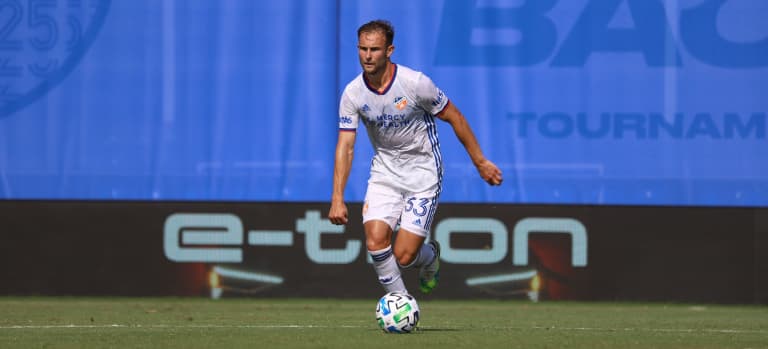
Knowing the New York Red Bulls are a high-energy team that feeds off the opponent’s inability to play through a press, Cincinnati allowed the opposition time and space on the ball. That might sound simple, but it requires extreme discipline, excellent positioning and constant communication.
What transpired was the Red Bulls did control possession – 64% of it in the first half – but they couldn’t do anything with the ball. They had no shots on target, while Yuya Kubo put Cincinnati in front when the Japanese winger capitalized on New York’s one defensive mistake in the opening 45 minutes.
“In the first half, they tried to play through it and they couldn’t find a way,” Stam said of the opponent.
When the second half arrived, FCC made the tactical adjustment that won the game and sealed the second seed in the group.
With the Red Bulls unable to pass through Cincinnati’s defense, they tried to play over it with crosses and corners. That didn’t work, either.
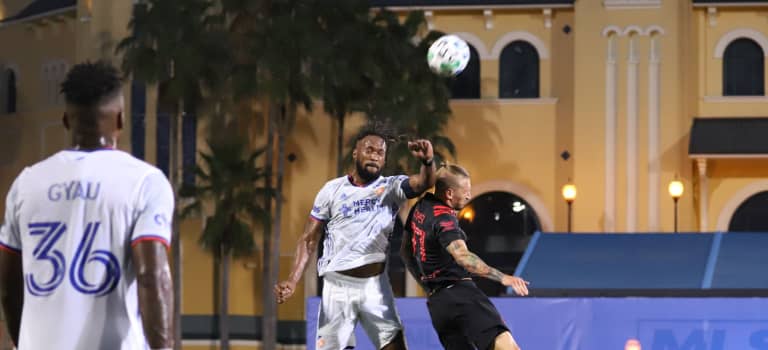
They had nine corners and played 44 crosses into the box – all without breaking down the Orange and Blue.
“We’ve got strong headers as well,” Stam said. “Even the midfield players can do well in doing that … We spoke about the scenarios and the players, they’ve done well.”
When the coach implemented the new approach, it kept Cincinnati’s backline stable in last Thursday’s 1-0 win against Atlanta United FC. That match saw FCC play patiently – and to their strengths – against an opponent that didn’t really adapt.
The 2-0 win over the Red Bulls produced another clean sheet, but it included the Orange and Blue adapting their tactics and suppressing an opponent that kept changing its approach.
In both circumstances, FC Cincinnati showed they can dull an opponent’s strengths without negating their own attacking potential. That’s a noticeable growth from this team that shouldn’t be shadowed behind the positive results.
“That’s what you need to handle and what you need to deal with,” Stam said.
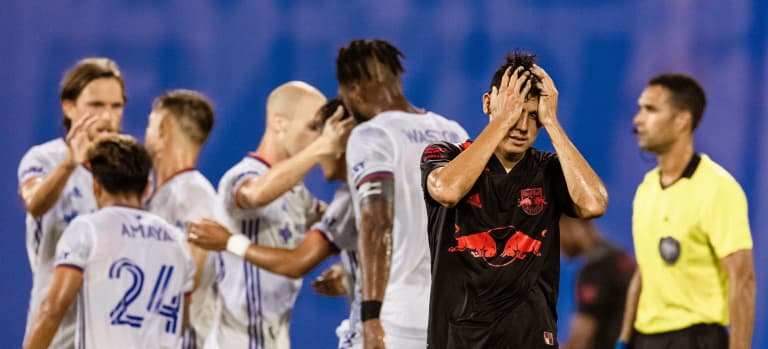
Expect this mentality to continue next Tuesday night in the knockout stage. The next opponent is unknown, but it’ll be against the Group F winner who went unbeaten in the group stage (the Portland Timbers or LAFC).
Once again, FCC will need a strong defensive unit that capitalizes on attacking chances when they arrive.
FCC’s interpretation of Catenaccio isn’t the club’s long-term identity, but it’s the one they’ve adopted – and executed – during the MLS is Back Tournament.
“What’s for now the best way to maybe play and that gives us that little bit of success as well,” Stam said. “Hopefully, from that success gives us the confidence and then we can start building from there. That’s what we’re trying to do. The guys, they picked it up well. The players are very positive.
“Everybody saw the work that’s been put in with the team and with the players. It’s looking promising.”

